Imagine yourself on a sun-drenched Caribbean beach, the gentle lapping of waves in your ears, and a glass of smooth, amber liquid in your hand. That’s the essence of Jamaican rum – a spirit as rich in history as it is in flavor.
⚠️ Alcohol Content Disclaimer: GetUrDrinkOn.com features content related to alcoholic beverages and mixology. All content is intended for informational and entertainment purposes only. We do not sell alcohol or promote underage or irresponsible drinking. This site is intended for adults aged—21 and over in the United States, and 18 and over in most other countries. Please drink responsibly. If you or someone you know is struggling with alcohol use, please seek professional help.
But how did this iconic drink come to be? The story of Jamaican rum is a fascinating journey through time, intertwining tales of colonial ambitions, plantation economies, and innovative distillation techniques. From its humble beginnings as a byproduct of sugar production to its current status as a globally revered spirit, Jamaican rum has played a pivotal role in shaping the island’s culture and economy.
👉 Upgrade your home whiskey setup with the sleek and functional 🛒 Zarler Bar Cart Bar Table with LED lighting, power outlet, and 4-tier liquor storage—perfect for any modern home bar.
Join us as we embark on a captivating exploration of Jamaican rum’s origins, traditional production methods, and evolution into diverse styles. We’ll meet key historical producers, uncover the spirit’s economic impact, and delve into its deep-rooted cultural significance. Finally, we’ll toast to the future, examining how modern innovations are propelling Jamaican rum into a new era of appreciation and craftsmanship.
Origins of Jamaican Rum
Early Sugar Production in Jamaica
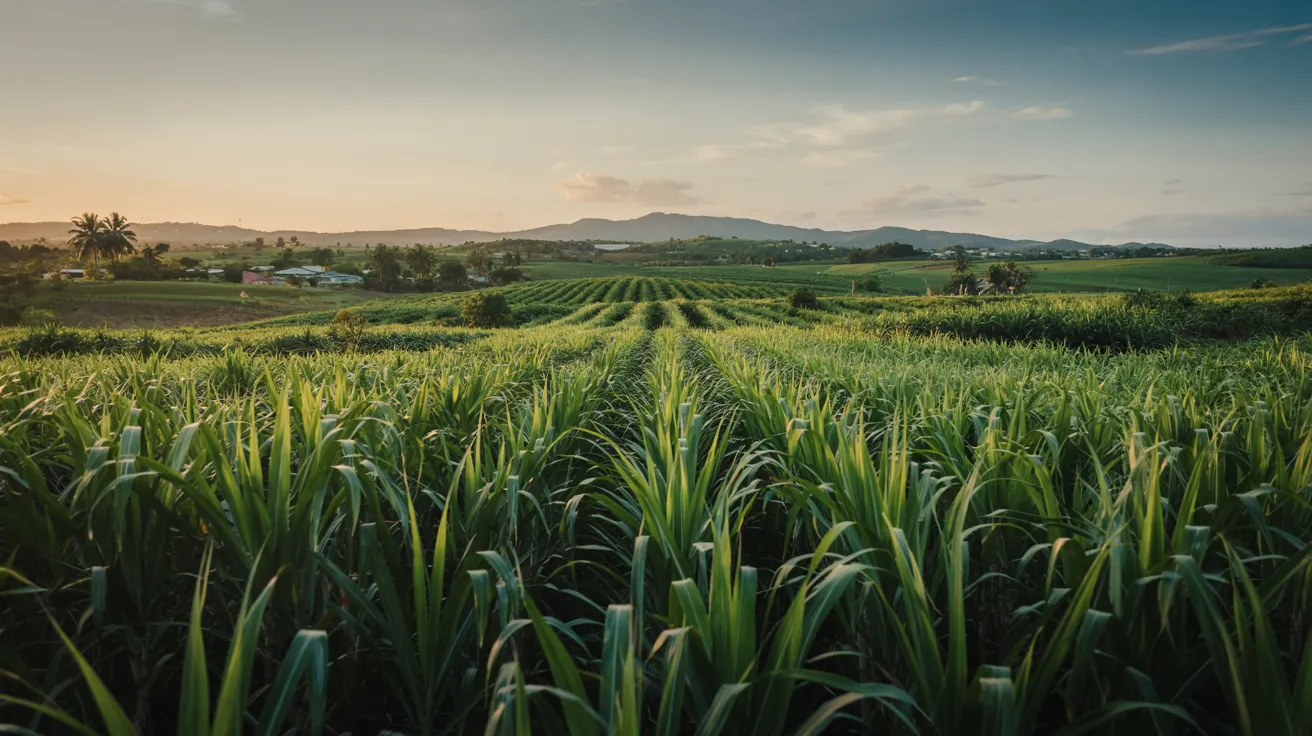
The story of Jamaican rum begins in the 1650s, shortly after British colonization of Jamaica. Thanks to the island’s rich volcanic soil and tropical climate, sugarcane farming flourished rapidly. By the late 17th century, Jamaica became one of the Caribbean’s leading sugar producers, laying the foundation for the rum industry.
As sugar plantations expanded, so did production:
| Year | Sugar Production (tons) |
|---|---|
| 1670 | 1,000 |
| 1700 | 10,000 |
| 1750 | 50,000 |
These booming outputs not only shaped Jamaica’s economy but also its future as a global rum powerhouse.
Emergence of Rum as a Byproduct
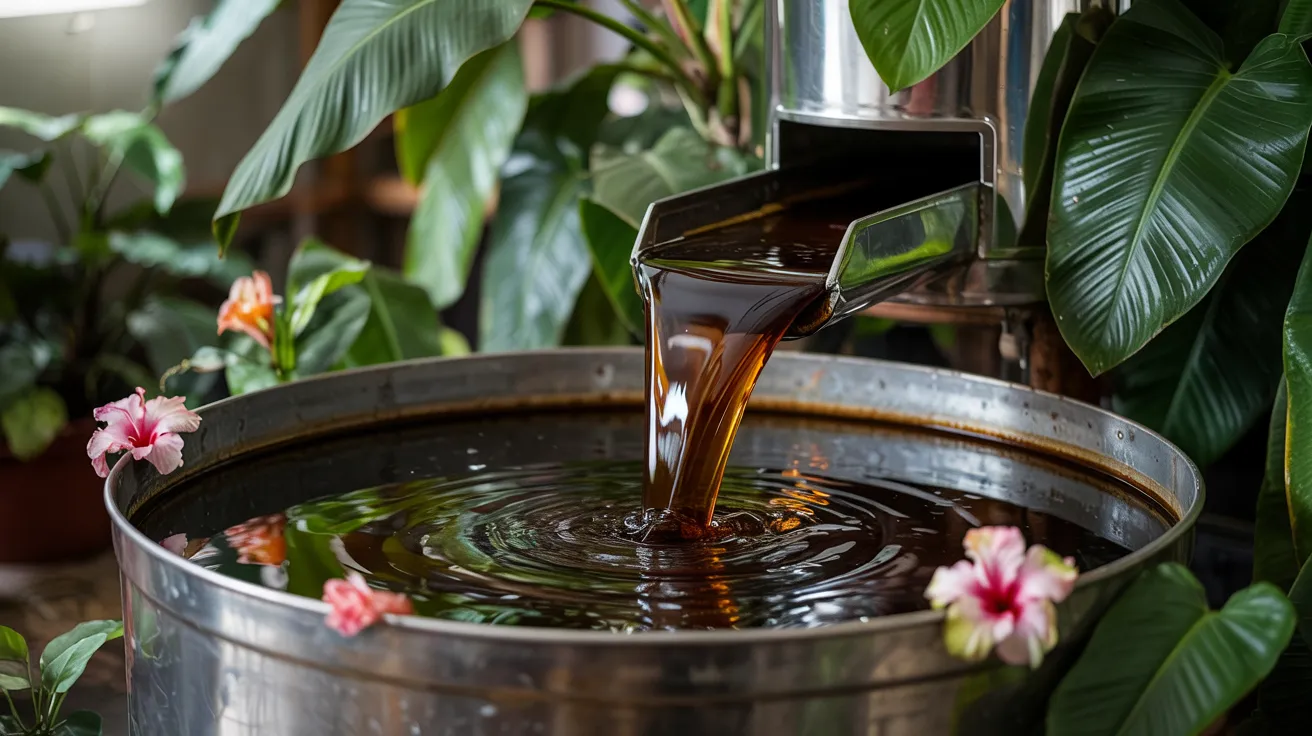
Rum was born out of necessity and ingenuity. During sugar refining, planters were left with large quantities of molasses, a thick syrup once considered industrial waste. However, enslaved Africans and local workers discovered that this molasses could be fermented and distilled into a strong spirit—thus giving rise to Jamaican rum.
This transformation had far-reaching effects:
- Increased plantation profits through diversification
- Created a valuable export commodity alongside sugar
- Became a favored drink among British sailors, pirates, and local communities
By the 18th century, Jamaican rum wasn’t just a byproduct—it was a cornerstone of the Caribbean trade and a cultural icon in its own right.
Traditional Rum-Making Techniques
Fermentation Process: Turning Molasses into Magic
At the heart of traditional Jamaican rum production lies the fermentation process—a critical step that sets the stage for the rum’s bold and complex flavor. Fermentation begins with molasses, a rich, dark byproduct of sugar refining, prized for its depth and aroma.
To initiate fermentation:
- Molasses is diluted with water, creating an ideal environment for fermentation.
- Yeast (often natural or wild strains) is added to the mixture, producing what’s known as a “wash.”
The yeast then converts the sugars in molasses into alcohol over several days, while also developing the unique esters and congeners that Jamaican rum is famous for.
| Fermentation Step | Duration | Result |
|---|---|---|
| Mixing ingredients | 1–2 hours | Formation of wash |
| Natural or wild fermentation | 5–7 days | Alcohol & flavor compound production |
This slow fermentation process is one of the secrets behind Jamaica’s intensely aromatic and flavorful rums.
Distillation Methods: Pot Still vs. Column Still
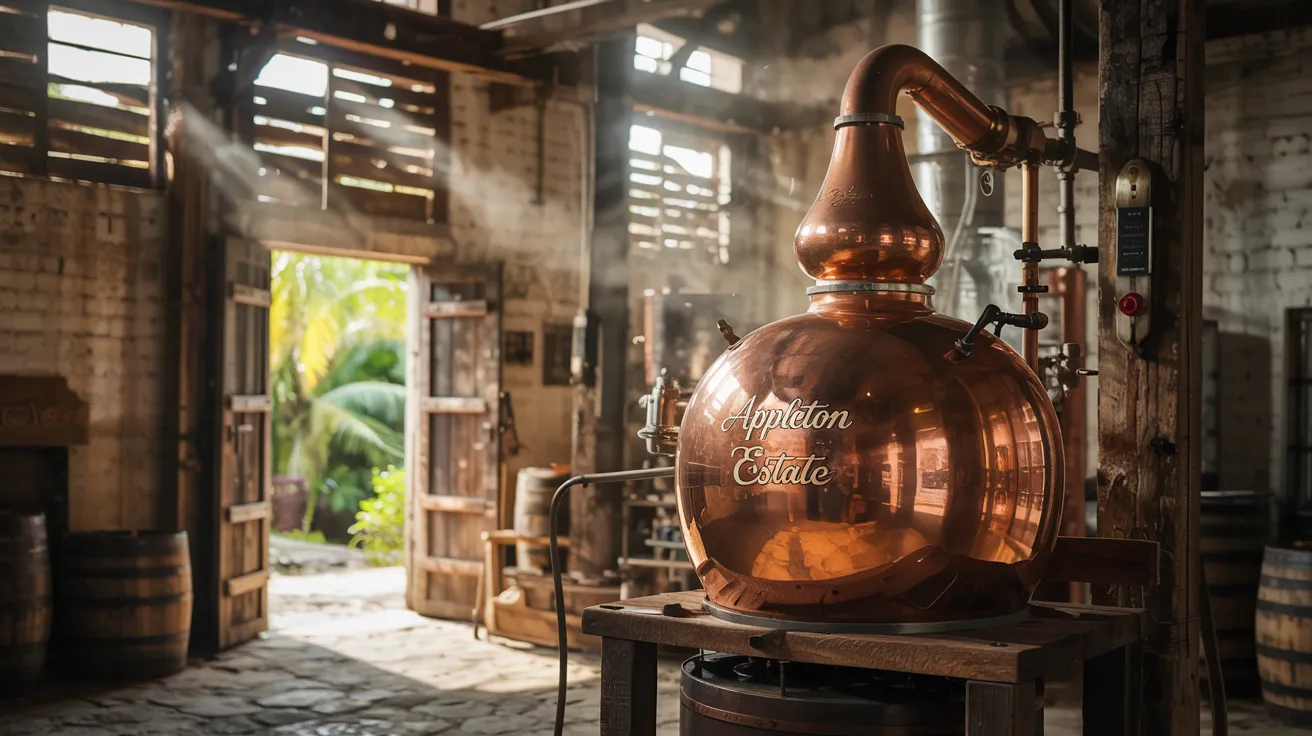
Once fermentation is complete, the wash moves to the distillation phase, where alcohol is extracted and concentrated.
Jamaican rum distillers typically use two primary distillation methods:
- Pot Still Distillation
This traditional, batch-style distillation is often associated with full-bodied, complex rums. Pot stills preserve congeners and produce bold flavors. This method is used by iconic distilleries like Appleton Estate and Hampden Estate. - Column Still Distillation
A continuous distillation method that yields lighter, cleaner rums. It’s more efficient and often used for blended rums or those meant for mixing in cocktails.
Flavor Impact: Pot stills create rich, funky rums known for “Jamaican hogo” (a signature ester-heavy aroma), while column stills produce smoother, more neutral profiles ideal for modern palates.
Evolution of Jamaican Rum Styles
Jamaican rum is celebrated worldwide for its bold character and time-honored production methods. Over the centuries, the island has produced a variety of distinct rum styles, each offering a unique taste experience. Two standout categories are overproof rum and dark rum—both pillars of Jamaican rum culture.
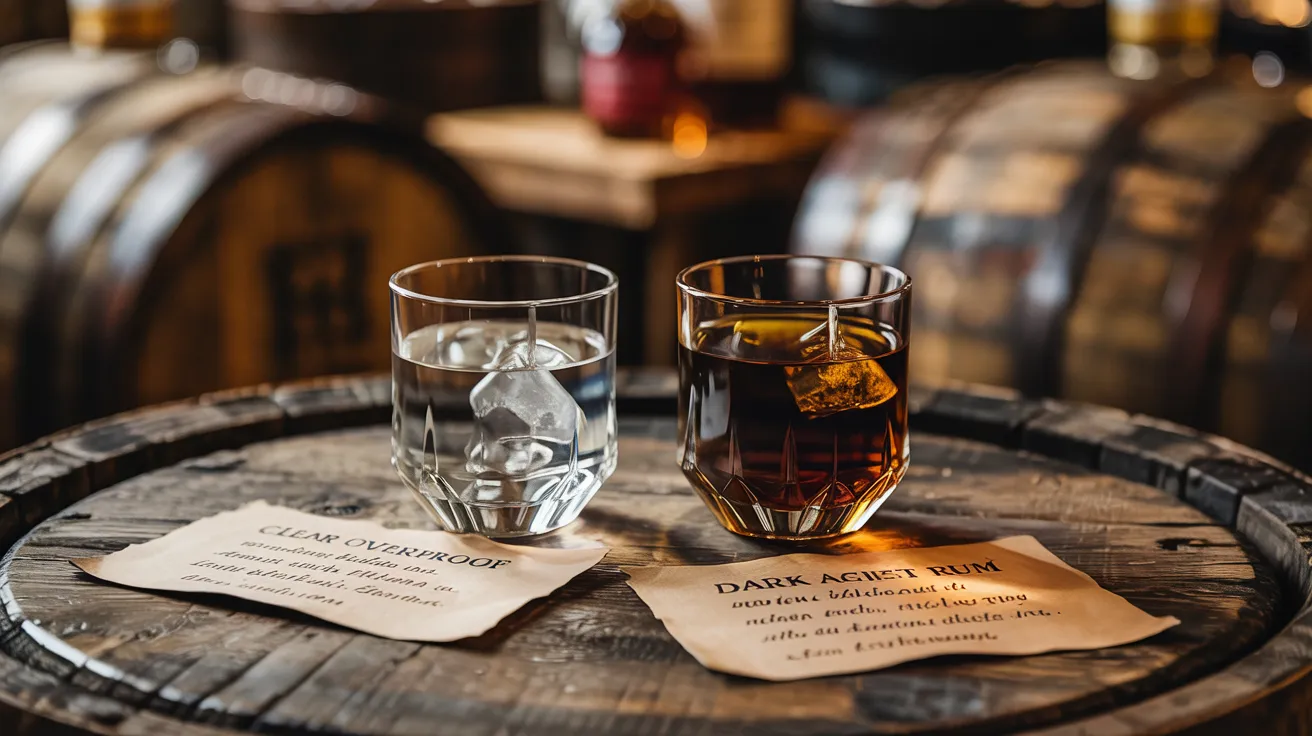
Overproof Rum: The Island’s Boldest Spirit
Overproof rum is a high-strength Jamaican rum with an alcohol content of 57.5% ABV or higher. It has been a cornerstone of Jamaican rum production for centuries and remains popular for its fiery intensity and versatility in cocktails.
| Rum Type | ABV Range | Characteristics |
|---|---|---|
| Overproof | 57.5% and above | Intense, fiery, ideal for cocktails |
| Standard | 40–50% | Balanced, smooth, versatile |
Overproof rum is especially revered for its ability to cut through rich ingredients, making it a go-to for tropical cocktails like rum punches and Ting with a Sting. Brands like Wray & Nephew White Overproof have achieved legendary status, offering an unmistakable punch of estery, fruity flavor.
⚠️ Warning: Due to its high alcohol content, overproof rum should be consumed responsibly and typically in moderation or as part of a mixed drink.
Dark Rum: Depth and Complexity in Every Sip
Dark rum is aged in charred oak barrels, a process that imparts both its deep amber color and its complex flavor profile. Jamaican dark rums are known for their robust, layered character, which includes:
- Molasses-like sweetness
- Notes of caramel and vanilla
- Hints of spice, smoke, and oak
These rums are aged for several years, allowing them to develop rich aromas and a smooth, lingering finish. Perfect for sipping neat or in classic cocktails like a Dark ’n’ Stormy or Rum Old Fashioned, dark Jamaican rums are beloved by enthusiasts and mixologists alike.
💡 Pro Tip: Look for expressions from distilleries like Appleton Estate and Worthy Park to experience premium-aged dark rums that showcase Jamaican terroir and craftsmanship.
Key Historical Rum Producers of Jamaica
Jamaica’s world-renowned rum legacy has been shaped by several iconic distilleries, each bringing unique character, history, and craftsmanship to the table. These historic rum producers have not only fueled the island’s economy but have also elevated Jamaican rum to global recognition.
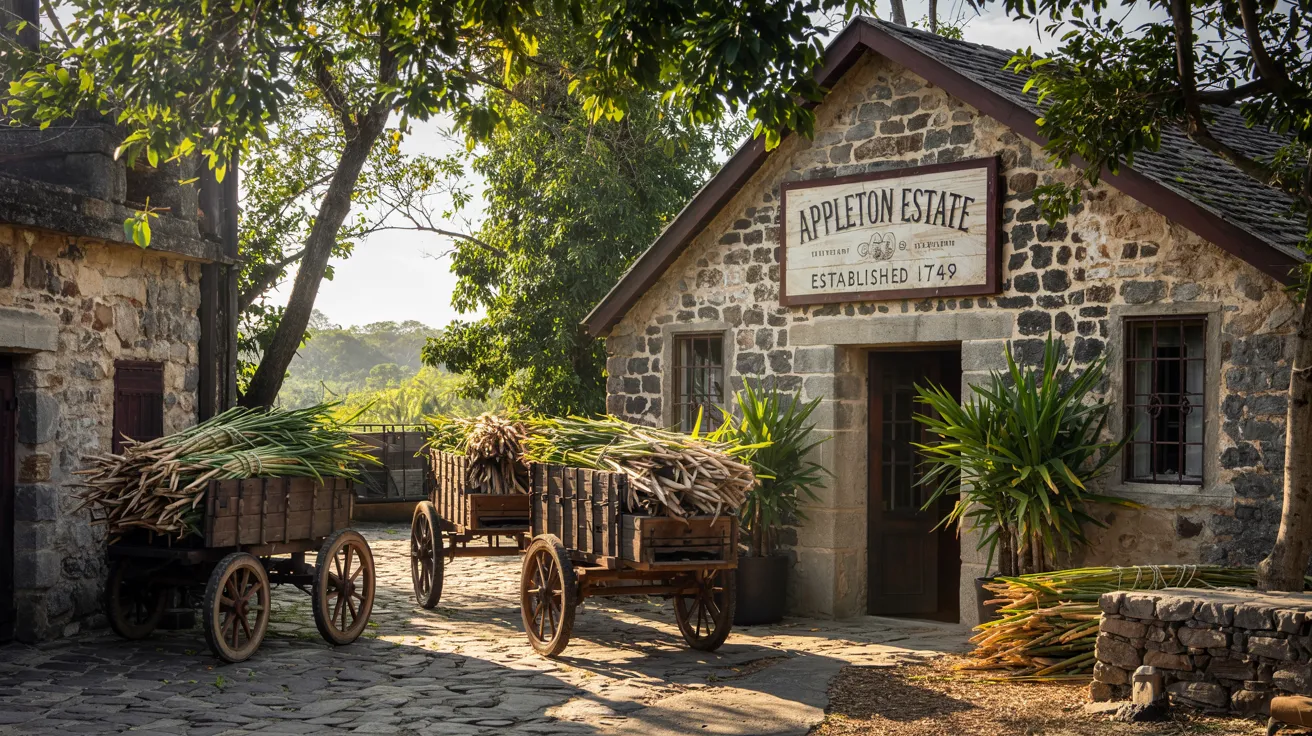
Appleton Estate – A Legacy of Excellence Since 1749
Appleton Estate is Jamaica’s oldest continuously operating sugar estate and distillery, founded in 1749. Nestled in the Nassau Valley, its rums are known for their rich, complex flavors, achieved through traditional copper pot still distillation and tropical aging.
Signature Product: Appleton Estate 21 Year Old – a luxurious, aged expression that showcases vanilla, nutmeg, and orange peel notes.
Appleton Estate has played a pivotal role in shaping the standards of premium aged Jamaican rum, making it a must-try for connoisseurs around the world.
Worthy Park Estate – Heritage and Revival
Founded in 1670, Worthy Park Estate is one of the island’s oldest sugar plantations. Although rum production paused for decades, it resumed in 2005, quickly reclaiming its reputation with a focus on full-bodied pot still rums crafted using time-honored methods.
Signature Product: Worthy Park Single Estate Reserve – a bold, fruity rum with notes of banana, spice, and molasses.
Their return has reinvigorated Jamaican rum traditions, combining historical techniques with a commitment to single estate authenticity.
Hampden Estate – The Heart of Funk
Operating since 1753, Hampden Estate is renowned for producing some of the most aromatic and ester-rich rums in the world. Their rums are intensely fruity, funky, and unfiltered, often used in blending but now increasingly bottled as standalone expressions.
Signature Product: Hampden Estate Pure Single Jamaican Rum – known for its powerful tropical esters and unadulterated character.
Hampden’s style is beloved by craft bartenders and tiki cocktail enthusiasts who seek bold, punchy rum flavors.
Mount Gay (Barbados Honorable Mention)
While not Jamaican, Mount Gay (founded in 1703) in Barbados is often mentioned alongside Jamaican producers due to its historical significance in Caribbean rum history.
Signature Product: Mount Gay XO – a smooth, complex blend aged in American whiskey, bourbon, and cognac casks.
Comparison Table of Historical Rum Estates
| Estate | Founded | Signature Product |
|---|---|---|
| Appleton | 1749 | Appleton Estate 21 Year Old |
| Worthy Park | 1670 | Worthy Park Single Estate Reserve |
| Hampden | 1753 | Hampden Estate Pure Single Jamaican Rum |
| Mount Gay | 1703 | Mount Gay XO (Barbados) |
Impact of Rum on Jamaica’s Economy
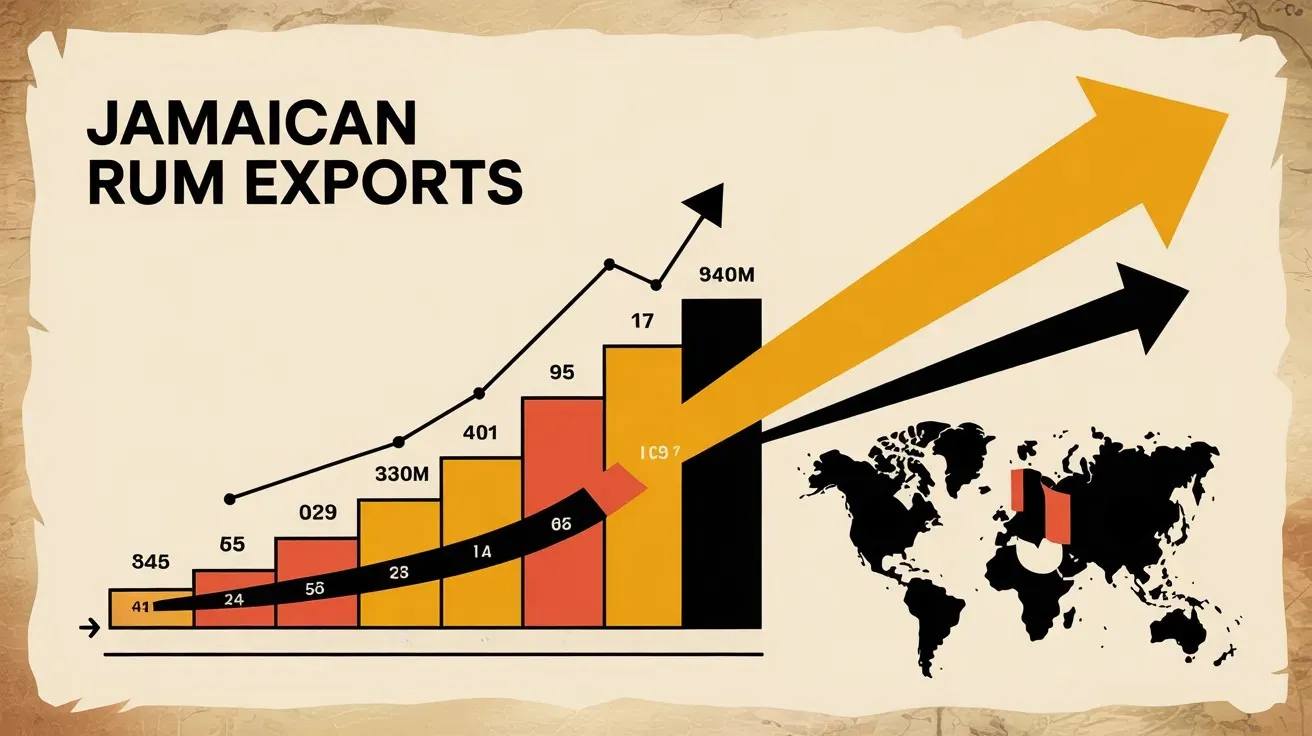
Export Revenue: Rum as a Pillar of Trade
Jamaican rum exports have long served as a vital component of the island’s economic engine. Since the 18th century, rum has been a valuable export commodity, helping to fuel national development and trade relations. Today, it continues to generate substantial foreign exchange earnings, reinforcing the country’s financial stability and international brand presence.
Here’s a snapshot of recent rum export values:
| Year | Export Value (USD millions) |
|---|---|
| 2018 | 15.7 |
| 2019 | 18.2 |
| 2020 | 16.5 |
Despite global challenges, including the COVID-19 pandemic, the rum industry has remained resilient, with consistent export figures and growing demand in markets like Europe, North America, and Asia. Premium Jamaican brands such as Appleton Estate, Hampden, and Worthy Park have significantly contributed to this success by appealing to a global audience that values authentic, heritage-driven spirits.
Employment Opportunities: Driving Local Economies
The rum industry in Jamaica is not just about the bottles on shelves—it’s a major source of employment that sustains livelihoods across multiple sectors. From the fields to the factories, rum touches nearly every corner of Jamaica’s agricultural and industrial ecosystem.
Here’s how the industry contributes to nationwide employment:
- Sugarcane Farming – Thousands of farmers cultivate sugarcane, the primary raw material in rum production.
- Distillery Operations – Skilled labor is required for fermentation, distillation, blending, and aging processes.
- Bottling & Packaging – Factories employ workers for bottle preparation, labeling, sealing, and quality control.
- Marketing & Distribution – Sales teams, logistics personnel, and brand ambassadors help rum reach global shelves and bars.
These jobs provide stable income to families, especially in rural areas, while supporting ancillary industries like cooperage (barrel-making), shipping, and tourism.
Economic Ripple Effect
The economic ripple effect of rum extends beyond the distilleries. Tourism in Jamaica, for example, often features rum distillery tours and rum tastings as part of cultural experiences, creating synergy between the rum sector and the travel industry.
Government initiatives have increasingly recognized rum as a cultural and economic asset, offering incentives to distilleries that adopt sustainable practices or expand their workforce.
Cultural Significance of Rum in Jamaica
Rum’s Role in Social Gatherings
Rum in Jamaica is more than a beverage—it’s a cultural emblem woven into the fabric of everyday life. At virtually every Jamaican social gathering, from backyard barbecues and beach parties to weddings and national celebrations, rum flows freely as a symbol of unity and hospitality.
Whether it’s a splash of Wray & Nephew overproof rum at a dancehall session or a glass of finely aged Appleton Estate at a formal event, rum is a shared experience. It encourages storytelling, laughter, and connection, often serving as the unofficial guest of honor at any gathering.
Here’s a breakdown of common pairings:
| Event Type | Popular Rum Drinks |
|---|---|
| Casual | Rum Punch, Rum & Coke |
| Formal | Aged Rum Neat, Signature Cocktails |
In Jamaican culture, offering a guest rum is a gesture of respect and welcome. Birthdays, christenings, funerals, and even casual reasoning sessions are often accompanied by a bottle being passed among friends and family—a tradition passed down through generations.
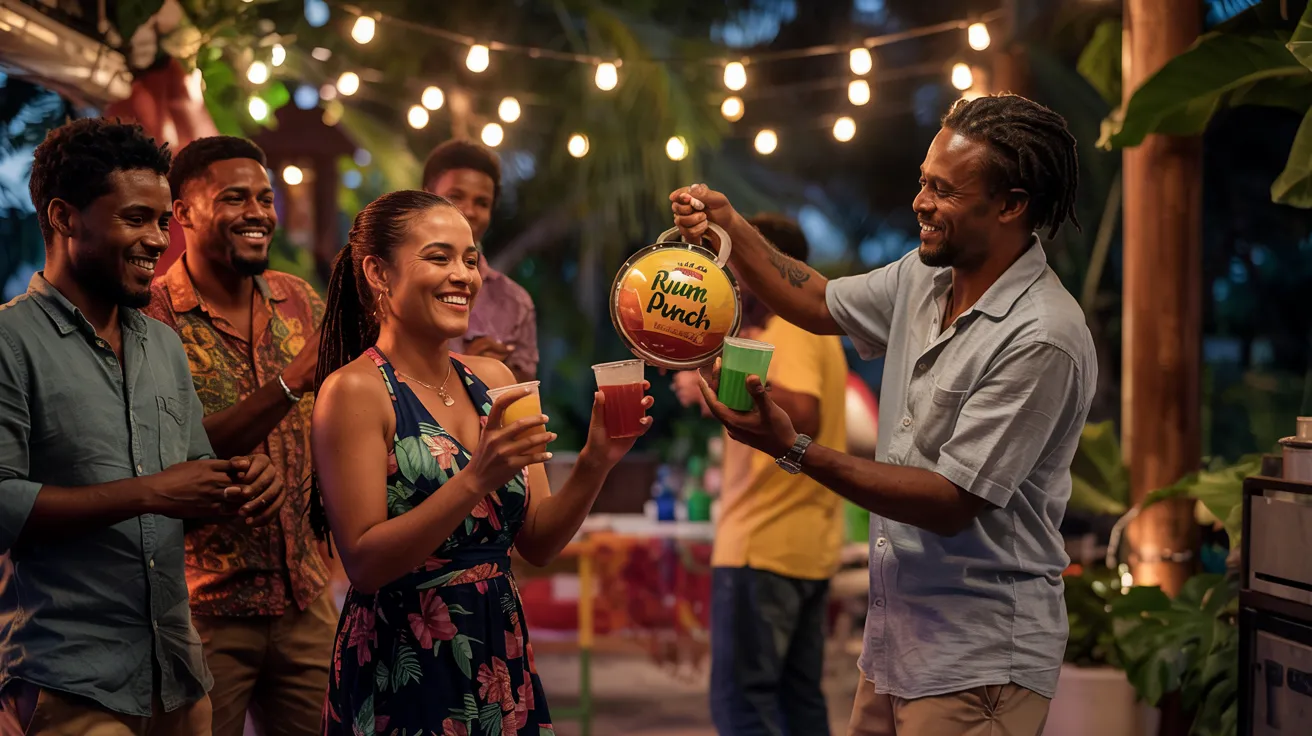
Influence on Jamaican Cuisine
The culinary influence of rum in Jamaica is equally profound. As a key ingredient in both sweet and savory dishes, rum contributes a distinctive richness and complexity that’s instantly recognizable in authentic Jamaican flavors.
Key uses of rum in Jamaican cooking include:
- Marinades for meats – Rum is a secret ingredient in jerk marinades, enhancing flavor and tenderizing proteins.
- Desserts – Classic Jamaican treats like rum cake, banana fritters, and rum-glazed plantains showcase its sweet, aromatic properties.
- Sauces and reductions – Rum adds depth to sauces for oxtail, pork, and even seafood, creating a caramelized, boozy finish.
Rum-infused dishes are especially popular during festive seasons like Christmas, where black cake soaked in rum and wine becomes a holiday staple. This culinary fusion of spirits and spices reflects Jamaica’s history, where African, European, and Caribbean traditions converge.
Modern Innovations in Jamaican Rum Production
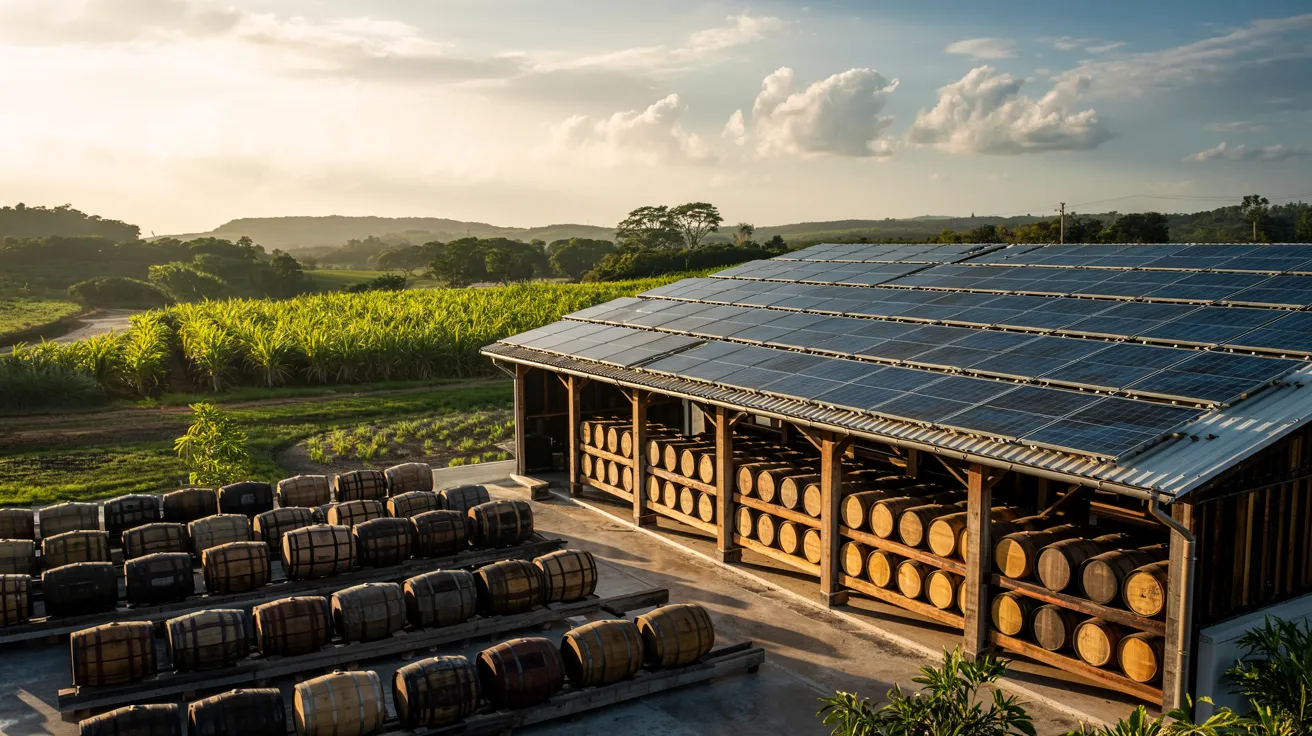
Sustainable Practices
As the global demand for environmentally conscious products increases, Jamaican rum producers are embracing sustainable rum production practices to reduce environmental impact while preserving the island’s natural beauty.
The industry has seen a shift toward eco-friendly distillation, prioritizing energy efficiency, water conservation, and waste reduction without compromising quality.
| Practice | Environmental Impact | Economic Benefit |
|---|---|---|
| Solar power | Reduced carbon footprint | Lower long-term energy costs |
| Rainwater harvesting | Preserves freshwater resources | Decreased utility expenses |
| Biomass fuel | Reuses byproducts like bagasse | Cuts fossil fuel dependency |
Many distilleries, such as Worthy Park Estate and Appleton Estate, have integrated solar panels, anaerobic digesters, and closed-loop water systems to create cleaner, more sustainable rum production processes. These initiatives not only promote environmental stewardship but also enhance the international appeal of Jamaican rum among eco-conscious consumers.
New Flavor Profiles
Innovation isn’t just about sustainability—it’s also about flavor evolution. Today’s Jamaican rum producers are pushing boundaries by experimenting with:
- Unique barrel-aging techniques using woods like acacia, cherry, or amburana
- Infusions with tropical fruits like guava, soursop, and mango
- Spiced rums incorporating native ingredients such as pimento (allspice), cinnamon, or nutmeg
These creative aging processes and infusions yield distinctive rum expressions that maintain the core characteristics of traditional Jamaican rum—funky, bold, and complex—while offering a modern twist for global palates.
By blending heritage with innovation, Jamaica continues to lead the rum world, catering to both traditionalists and adventurous drinkers seeking new rum experiences.
Brewing Up a Final Thought
Jamaican rum’s rich history spans centuries, evolving from its origins in sugar production to become a globally renowned spirit. The island’s unique rum-making techniques, diverse styles, and influential producers have shaped the industry and contributed significantly to Jamaica’s economy and cultural identity.
👉 Master your craft with 🛒 The Art of Mixology: Classic Cocktails and Curious Concoctions—a beautifully illustrated cocktail recipe book perfect for home bartenders and mixology enthusiasts.
As we raise a glass to Jamaica’s rum heritage, we’re reminded of the spirit’s enduring impact on the island and beyond. Whether you’re a rum enthusiast or a curious novice, exploring the world of Jamaican rum offers a taste of history, innovation, and the vibrant culture that continues to shape this iconic Caribbean spirit.
📌 Also Read: A Beer Lover’s Bucket List: The Best Beer Festivals Worldwide
Join the Conversation!
Drop your thoughts in the comments below and let’s chat about all things beverage!
Frequently Asked Questions (FAQ)
Rum production began in the 17th century as a byproduct of Jamaica’s growing sugar industry, when molasses was discovered to be fermentable.
Overproof rum is a high-strength spirit with an ABV over 57.5%. It’s known for its intensity, bold flavors, and popularity in Jamaican cocktails.
Appleton Estate, Worthy Park Estate, Hampden Estate, and Monymusk are among the most recognized rum producers in Jamaica.
Jamaican rum is known for its full-bodied flavor, use of pot stills, and fermentation techniques that produce rich esters and bold aromas.
Rum is deeply woven into Jamaican culture, from music and cuisine to social gatherings and national identity.



